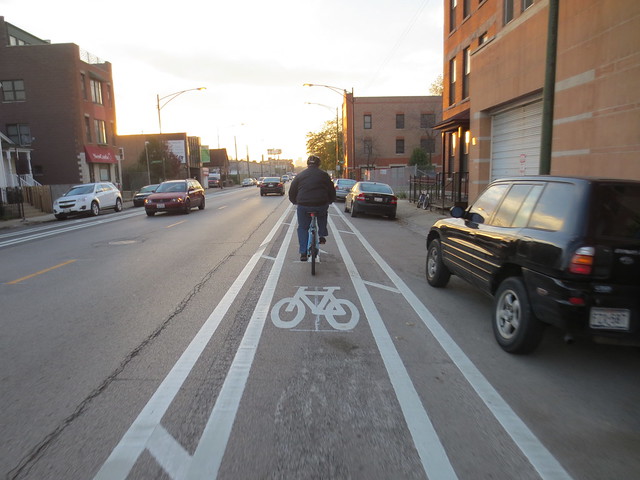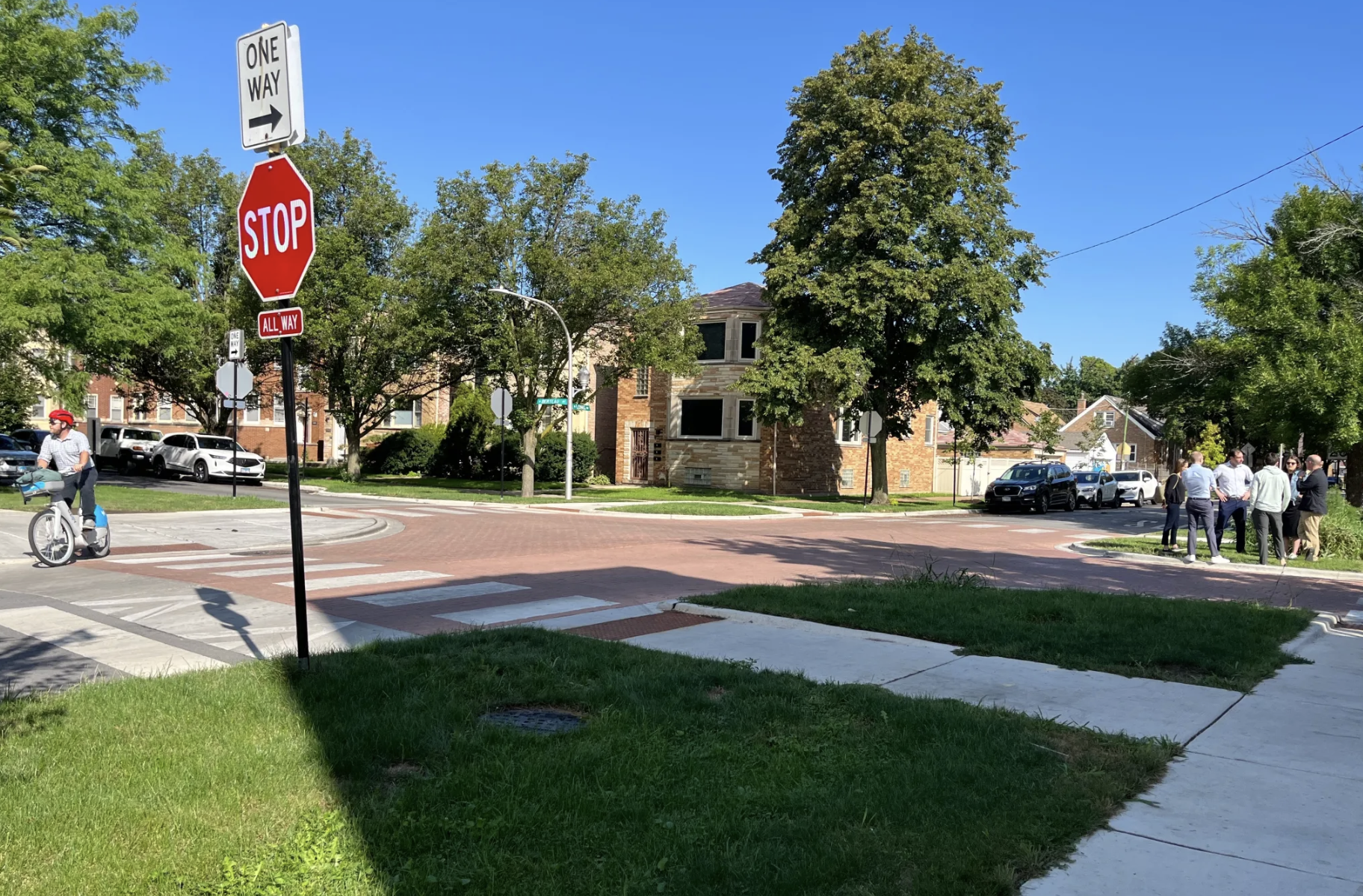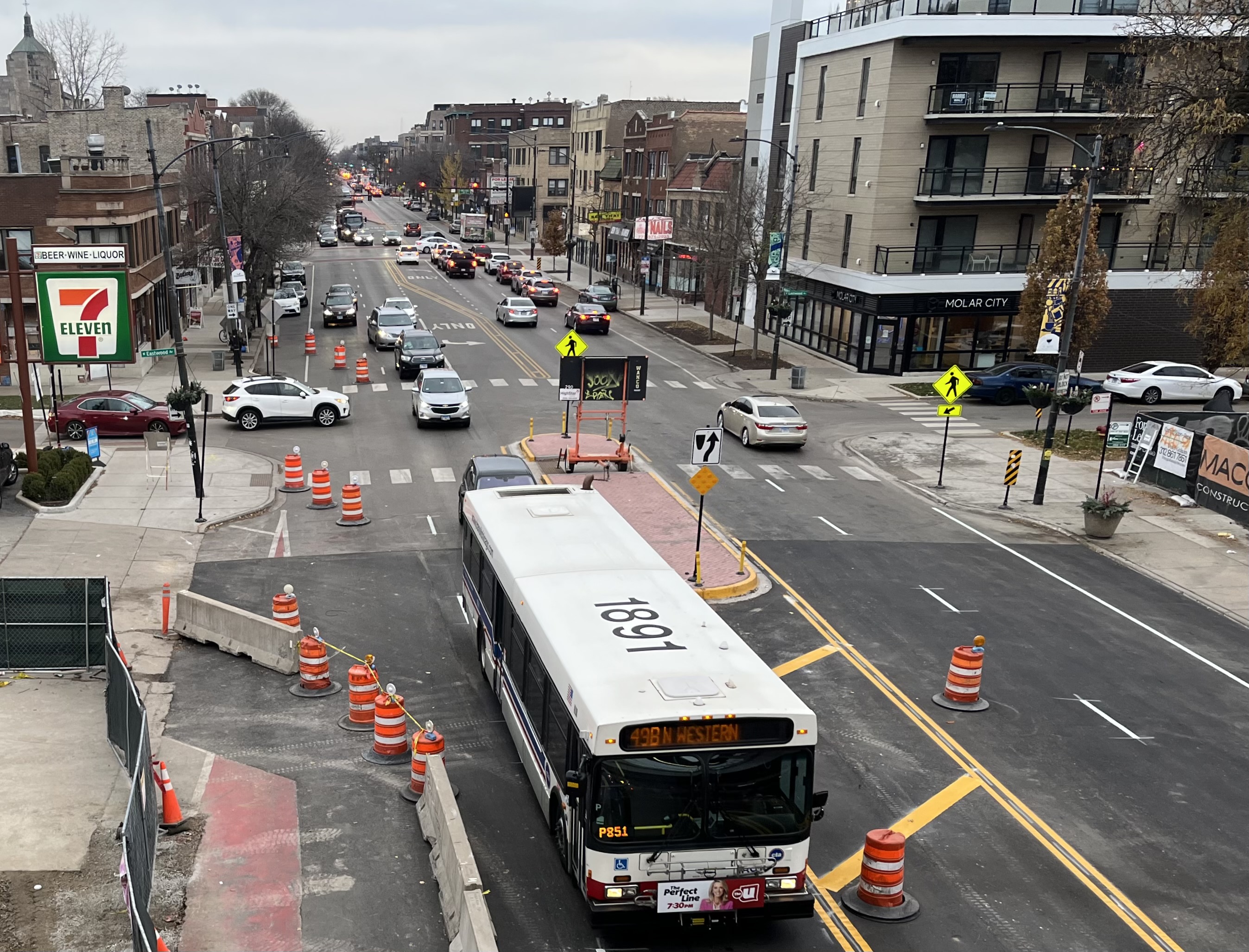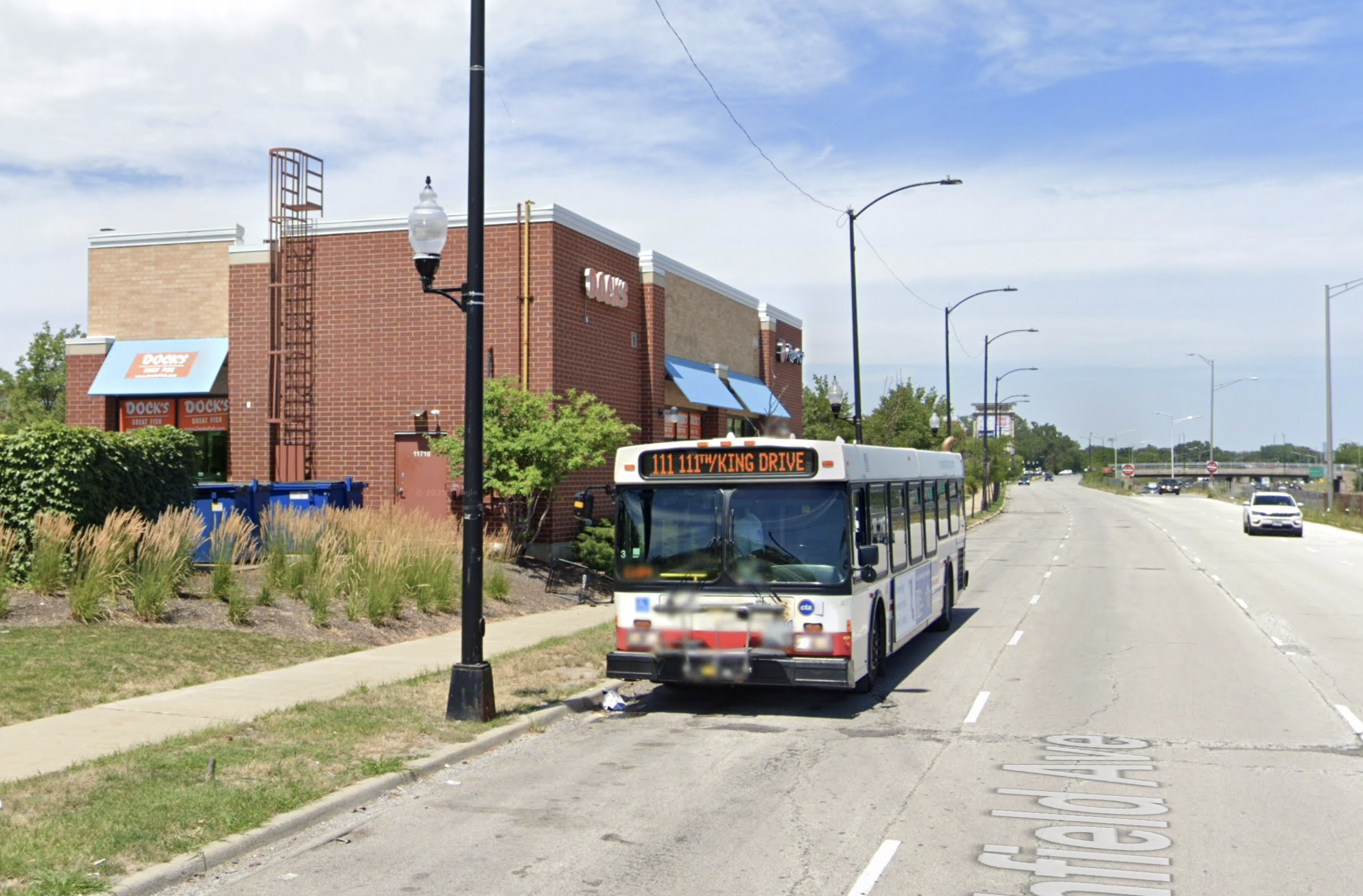In a surprise move, the Chicago Department of Transportation recently began building the city’s first curb-protected bike lanes on Sacramento Drive through Douglas Park. This morning, assistant director of transportation planning Mike Amsden provided an update on this game-changing facility, plus a slew of other bikeways projects slated for 2015.
Four years ago, Mayor Rahm Emanuel pledged to build 100 miles of physically protected bike lanes within his first term. Later the goal was revised to include buffered bike lanes -- which don't offer physical protection from cars -- as wells as PBLs. The city currently has 71.5 miles of BBLs and 18.5 miles of protected lanes, for a grand total of 90 miles, according to Amsden.
Since Emanuel was inaugurated for his second term this morning, the 100-mile target has obviously been pushed back a bit, but it's likely CDOT will exceed that goal by the end of this year. "When we get there, [Streetsblog] will be the first to know," Amsden promised. “Our focus this year is really going to be on bridging the gaps in the bike network."
The new curb-separated lanes run on both sides of Sacramento, a curving roadway within the Southwest Side green space, on a quarter-mile stretch between Douglas Boulevard and Ogden Avenue. The curbs are about six inches high and two feet wide, with breaks at drainage basins, and wherever park paths cross the street.
The Sacramento protected bike lanes were originally installed in 2012 on a section that included some truly awful pavement – a counterproductive practice that CDOT has since discontinued. The new curbs are being put in as part of a resurfacing project.
“Over the past four years, we’ve put in a lot of bike lanes in a short time, but it was always our goal to upgrade them over time,” said Amsden. “We’re piloting curb separation here. Experimenting with concrete is something we want to do moving forward whenever we can.”
While CDOT and the Illinois Department of Transportation announced plans for curb-separated bike lanes on Clybourn Avenue in Old Town last summer, there was no public announcement about the Sacramento curbs, Amsden said. However, 24th Ward Alderman Michael Chandler signed off on the plan. In early 2013, Chandler asked CDOT to downgrade an existing PBLs on nearby Independence Boulevard to buffered bike lanes.
While Amsden said he has heard reports of drivers parking in the Sacramento PBLs south of Ogden, near baseball diamonds and soccer fields, he doesn’t anticipate problems with cars blocking the curb-protected lanes, which are about eight feet wide. “I wouldn’t say anything is impossible, but one of the goals of the concrete separation is to encourage drivers not to park in them.”
IDOT had previously prohibited CDOT from installing PBLs on state roads within the city. However, the state transportation department lifted the ban after an allegedly drunk driver struck and killed cyclist Bobby Cann at Clybourn and Larabee Street in 2013, and is actually spearheading and funding the Clybourn curb-protected lane project. CDOT has been helping out with design input and public outreach, Amsden said.
The state recently held a bid opening for the Clybourn construction contract, and the curb-protected lanes may be built later this year. Read more about the project here.
As I discussed last week, a northbound buffered lane is going in on State Street from 79th to 69th in order to narrow the travel lanes, as part of a complete streets makeover. “The goal is primarily to improve conditions for pedestrians,” Amsden acknowledged. However, a bikeway on Vincennes Avenue will be extended north to 69th in the near future, mostly as buffered bike lanes, and a short stretch of 69th will get BBLs, creating a connection over the Dan Ryan Expressway between Vincennes and State.
Also, CDOT plans to link up the existing stretch of buffered and protected lanes on Vincennes with the Major Taylor Trail via two blocks of buffered lanes on Vincennes from 103rd to 105th, plus shared-lane markings and wayfinding signs on a short stretch of 105th. Construction should start any day now, Amsden said.
Soon, almost all of nine-mile-long Elston Avenue will be upgraded to BBLs, Amsden said. About 4.5 miles were completed last year, and another 3.5 to four miles of upgrades will happen the near future. This does not include the segment of Elston between North Avenue and Webster Avenue, where the local business association North Branch Works previously opposed BBLs. However, the group has dropped its opposition, and the buffered lanes may go in by fall, pending design review, Amsden said.
One stretch of Elston that won’t be upgraded anytime soon is the segment at Fullerton Avenue and Damen Avenue, where Elston is being rerouted through the Vienna Beef factory site. This stretch will get curbside, curb-protected bike lanes, Amsden said.
Along with State and Vincennes, a few other streets designated as “Spoke Routes” in the city’s Streets for Cycling Plan 2020 will be getting improvements this year. Buffered and protected bike lanes on Milwaukee Avenue – the city’s busiest biking street -- will be extended northwest to Division Street. The two-to-three-block segment between Elston and the Kennedy Expressway will get PBLs with New York City-style concrete parking end caps – another first in Chicago.
Milwaukee’s bridge over the Kennedy will get bicycle passing lanes, nearly identical to what currently exists on the street’s Ohio Feeder overpass. And the section of Milwaukee between Augusta Boulevard and Division will get buffered lanes.
Lake Street, the east-west Spoke Route, which currently has protected lanes running from Ashland Avenue to the Oak Park border, will get buffered lanes between Ashland and Halsted Street. CDOT will also be extending the BBLs on South Chicago Drive, a Spoke Route that serves the Southeast Side, by building a new stretch between 79th and Marquette Road, 6700 South. Like the installation of buffered lanes on the southernmost section of South Chicago, this project will involve a “four-to-three conversion” road diet.
Existing bike lanes on a 2.5-mile segment of Lawrence Avenue, between Central Avenue and Central Park Avenue, will be upgraded to buffered lanes in the near future. “[Bike advocate] Bob Kastigar has been eagerly awaiting that one,” Amsden said.
CDOT is working with several aldermen on new neighborhood greenways, aka bike boulevards, traffic-calmed bike routes on residential streets, Amsden said. In Uptown, a greenway on Leland Avenue, which 46th Ward residents voted to bankroll with ward money via a participatory budgeting election, is currently in design review. The transportation department will also be installing route signs and sharrows on a short stretch of Marshfield Avenue to direct cyclists from the Cortland Street to Walsh Park, the eastern terminus of the Bloomingdale Trail, which is opens on June 6.

He said he’s particularly excited about the protected bike lanes that will be installed downtown this year as part of the Loop Link bus rapid transit project. Construction on dedicated bus lanes is currently underway on Madison Street and Washington Street, the latter of which will get an eastbound PBL between the curb and the new island bus stops. The existing westbound bike lane on Madison will be replaced by a protected lane on Randolph Street, which is currently torn up for water main work.
CDOT will also be building a two-way protected bike lane on Clinton Street, similar to the Dearborn Street PBL, which will connect the Randolph and Washington lanes with existing PBLs on Harrison Street. The whole Loop Link corridor is supposed to be up and running by the end of the year. “Soon we’ll have a robust network of protected bike lanes downtown, which, in my biased opinion, is pretty unparalleled in this country,” Amsden said.
Update: According to IDOT spokesman Guy Tridgell, the Clybourn protected bike lane contract was awarded earlier this month to Summit Construction Company for $700,000. Work is slated to start this summer and wrap up in the fall.







